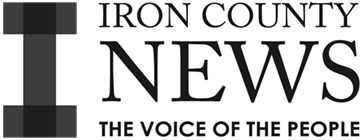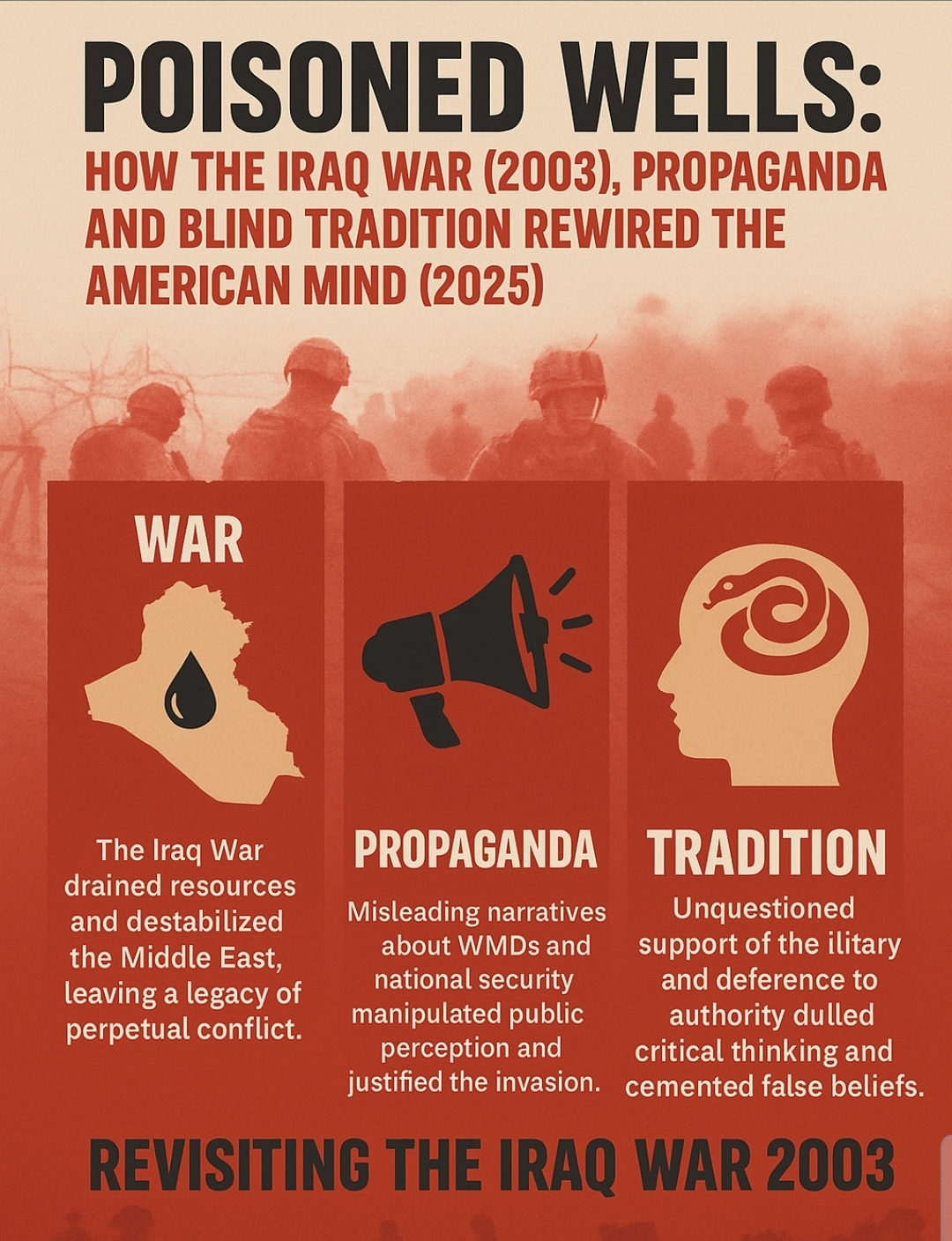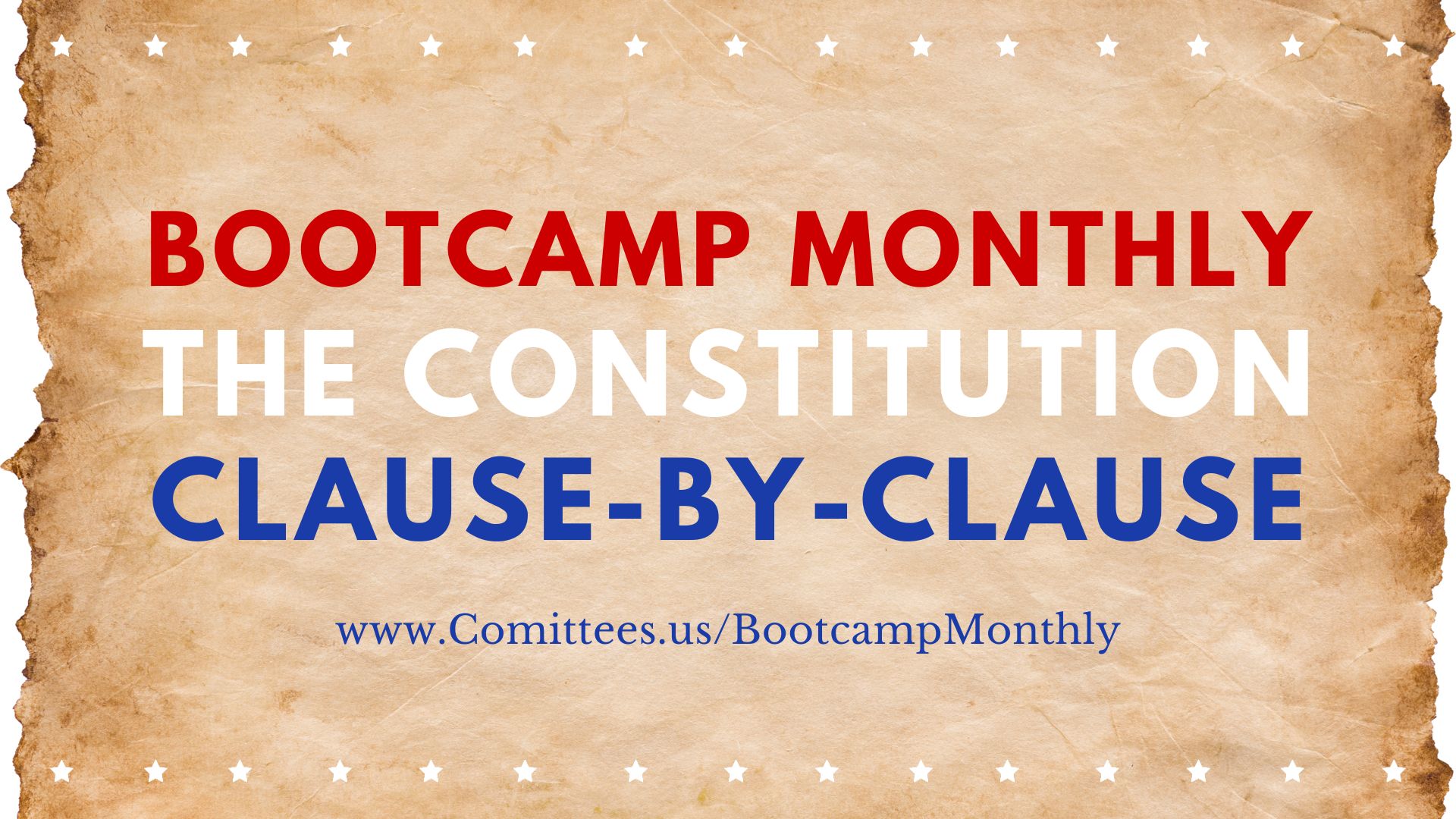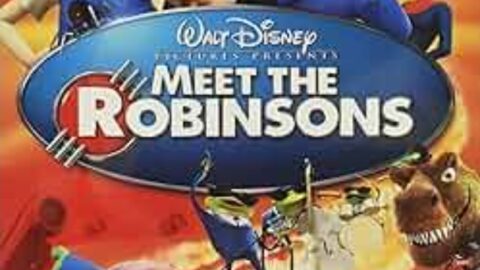Introduction
Mark Twain once said, “A lie can travel halfway around the world before the truth can put its shoes on.” In 2003, that lie was Weapons of Mass Destruction in Iraq. It metastasized not through fringe voices, but through the mainstream press itself — and it permanently reshaped America’s relationship with truth, power, and freedom.
The Iraq War was not just about oil, geopolitics, or military strategy; it was about the colonization of the American mind—both unconscious and conscious. Through relentless propaganda, selective reporting, and the suppression of dissenting voices, narratives were implanted into the collective psyche. These stories, repeated enough times, hardened into “truth.”
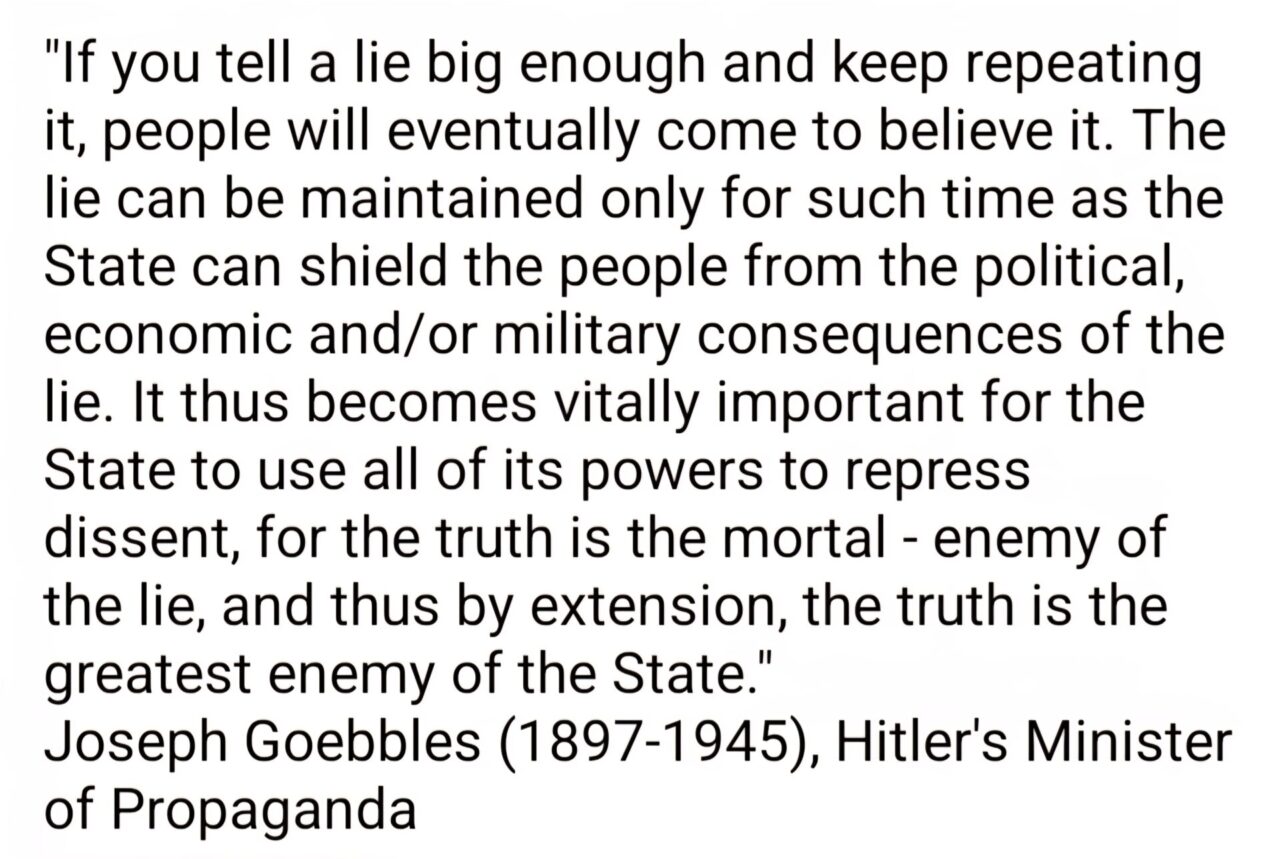
Now, more than twenty years later, the children of that generation inherit those accepted fictions as reality, embedding them deeper into the eternal American mind and cultural memory. What began as spin has calcified into history, and unless challenged, will continue shaping beliefs for generations.
To truly grasp why these matters, we must understand The Human Mind Model: How Our Three Minds Shape Behavior, Belief, and Control. The conscious mind, our seat of reason and logic, is where we process facts and arguments. Yet, it is shockingly limited in capacity and easily distracted. The subconscious mind is far more powerful—it runs habits, stores emotions, and absorbs patterns without questioning them. And below both lies the unconscious, the deep reservoir of inherited archetypes, cultural imprints, and primal drives. When governments and media wish to control populations, they do not aim at reason alone; they penetrate the subconscious through repetition, imagery, and emotional triggers, and they anchor narratives in the unconscious through myths, fear, and symbolic framing.
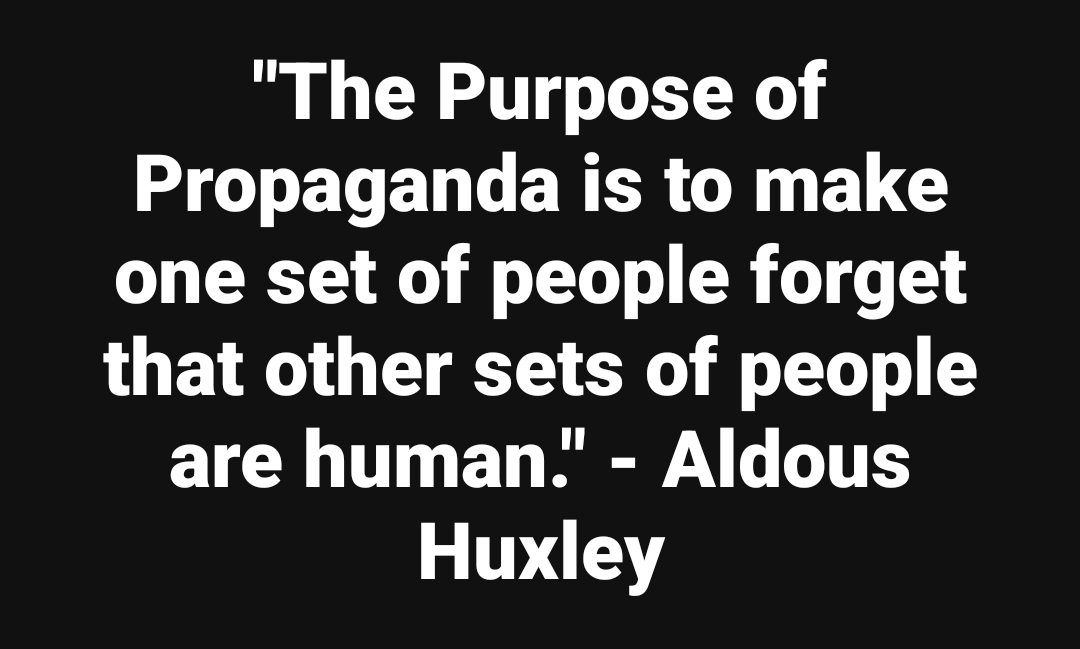
The Iraq War era demonstrated this mechanism with ruthless precision. Citizens believed they were evaluating facts, but their conscious mind was drowned out by fear (“weapons of mass destruction”), tribal loyalty (“support our troops”), and authority bias (“trust the experts”). The subconscious absorbed the drumbeat of televised images—flags waving, generals speaking, mushroom clouds simulated in CGI. The unconscious, wired to fear annihilation, accepted the frame of “us versus them,” “good versus evil,” and “preemptive survival.” Once these three layers aligned, dissent became nearly impossible, because questioning the narrative felt like questioning reality itself.
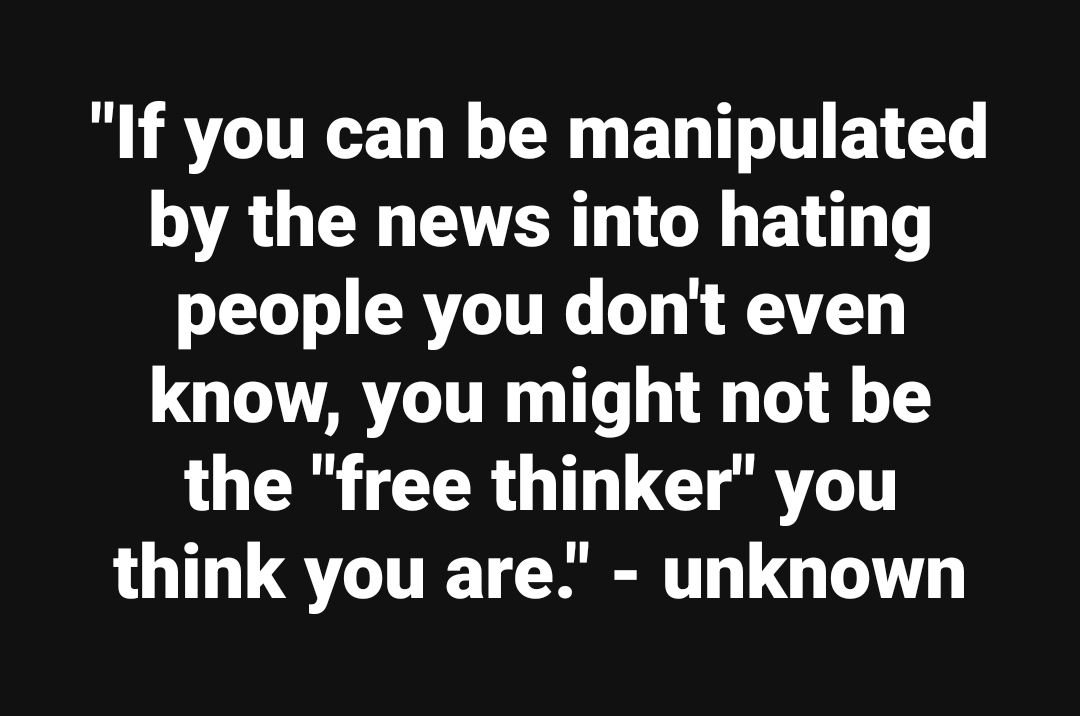
Understanding the three minds is essential for reclaiming autonomy. If propaganda colonizes the subconscious and unconscious, then truth-seeking requires more than fact-checking. It demands practices that re-train the subconscious through new habits of thought, and the courage to confront the unconscious archetypes that make us susceptible to manipulation in the first place. Only by mastering our inner architecture can we resist the next wave of manufactured consent and reclaim the freedom of a mind that belongs to us, not to the system.
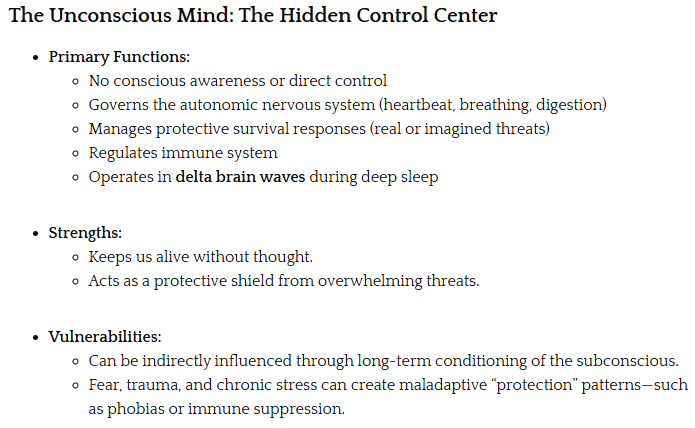
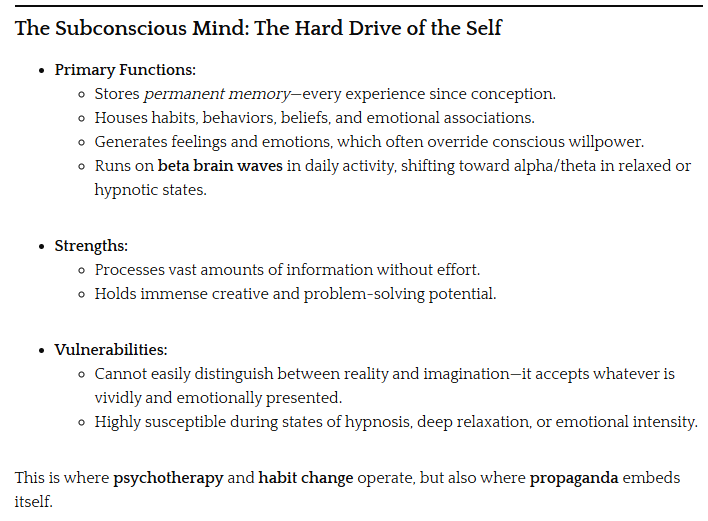
Journalism, intelligence agencies, and government acted in concert—to insert falsehoods into the unconscious mind of the citizenry. Once installed, these lies became the fertile soil for propaganda creep, shifting Overton Windows, and controlled dialectics. The consensus media was not simply reporting events; it was shaping the frame through which all events would be interpreted. Truth was no longer discovered, it was delivered—packaged, repeated, and ritualized until it no longer needed defending.
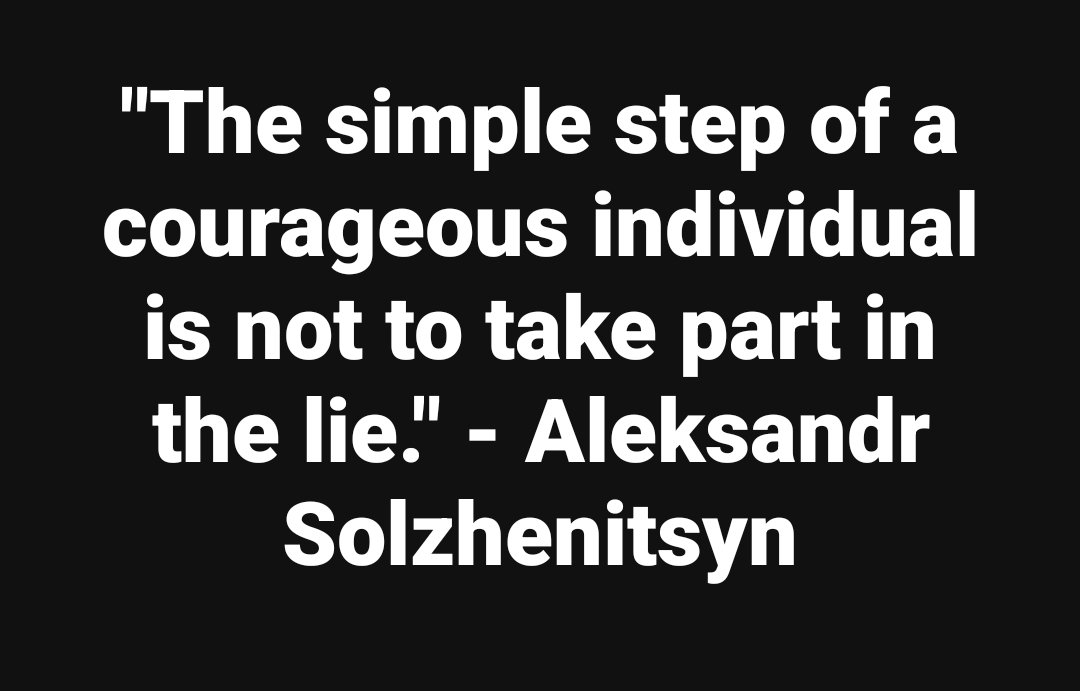
At the conscious level, citizens believed they were making rational judgments about the Iraq War, terrorism, or national security. They saw “evidence” presented on the evening news, heard confident declarations from leaders, and assumed facts had been vetted. Yet the conscious mind, narrow and easily overwhelmed, is rarely equipped to challenge the flood of coordinated messaging. It processes only what is in front of it, and when the range of available narratives has already been narrowed, the conscious mind confuses conformity with truth.
At the subconscious level, the conditioning became more insidious. Images of mushroom clouds, endless replays of the Twin Towers falling, and the constant color-coded “terror threat levels” bypassed logic and lodged themselves as emotional triggers. Citizens were being trained, Pavlov-like, to associate dissent with danger and obedience with safety. Over time, the subconscious internalized fear as a normal operating system, making compliance feel not coerced but natural.
At the unconscious level, archetypes and primal instincts were activated—fear of annihilation, the us-versus-them tribal instinct, the savior-leader mythology. These deep structures of the mind do not argue; they believe. Once the narrative of good America versus evil “other” was anchored here, questioning it became more than unpopular—it became heretical, a betrayal of one’s tribe and very identity. This is why propaganda succeeds not by persuading the conscious mind alone, but by colonizing the subconscious and unconscious. Once those depths are captured, truth becomes almost irrelevant.
The 2017 film Shock and Awe, directed by Rob Reiner, attempted to revisit one of the darkest chapters in modern American journalism: the run-up to the Iraq War. It told the story of the Knight Ridder reporters who dared to challenge the Bush-Cheney administration’s claims about weapons of mass destruction, at a time when nearly every other major media outlet fell in line. Yet, despite its historical importance and the urgency of its message, the movie flopped at the box office.
Part of this failure can be attributed to timing. By 2017, Americans had lived through nearly two decades of “forever wars,” media spin cycles, and political disillusionment. Many were exhausted — overwhelmed by endless scandals, saturated in propaganda, and numbed into apathy. When propaganda has seeped into the unconscious mind, truth often feels less urgent than comfort. Apathy becomes a defense mechanism. The very neurological rewiring that allowed government narratives to override skepticism in 2003 may have also muted the impact of a film trying to reawaken those critical questions years later.
There is also the matter of branding. The title Shock and Awe carried with it an unintended association. For many, it still evoked the Bush administration’s slogan for the brutal aerial campaign that opened the Iraq War — a phrase meant to project dominance, not dissent. Had the film been titled something more direct — perhaps The Lies Before the War or Weapons of Mass Deception — its mission might have been clearer. But even then, the film would have struggled to break through entrenched tribal lines. The “staunch, by-the-book” Republicans of that era were unlikely to embrace a story that directly indicted their leaders.
And while Knight Ridder — a newsroom of stubborn reporters — stood as David against the Goliaths of government and monopolized media, they were ultimately drowned out. The last bastion of independent journalism was silenced not with tanks, but with mergers, buyouts, and monopolization.
Since the Covid era, America has seen glimpses of awakening — citizens questioning official narratives, recognizing the fingerprints of propaganda, and feeling again the weight of government overreach. Yet, as quickly as sparks ignite, they also fade. Many who once demanded truth during lockdowns, mask mandates, and vaccine rollouts are now lulled back into the comfort of distraction, entertainment, and partisanship. It is a cycle as old as the republic itself: bursts of vigilance followed by waves of sleep.
This is why a film like Shock and Awe is more important today than when it premiered. Under the same spirit that animated 1776 — the suspicion of unchecked power, the courage to dissent, and the refusal to surrender freedom for safety — we must revisit the story of how lies became policy, how propaganda replaced journalism, and how critical voices were silenced. The Iraq War wasn’t just a foreign tragedy; it was a template for how governments and media can colonize the minds of their own people.
Watching Shock and Awe now is not simply an act of remembrance; it is an act of resistance. It trains the eye to see how language is weaponized, how fear is manipulated, and how truth-seekers are marginalized. It reminds us that propaganda is not a relic of the past but a living strategy — one that reappears whenever citizens let their guard down. And in that sense, the film does more than tell the story of 2003. It arms us for today, tomorrow, and every time power tempts us to trade liberty for security.
The Stenographers of Power
Judith Miller’s reporting for The New York Times became the symbol of this collapse. A Pulitzer Prize-winning journalist, she was fed intelligence claims about WMDs and passed them to the public with little skepticism. The Times amplified those claims onto front pages — laundering propaganda into “truth.”
This wasn’t just bad journalism; it was the fruit of the poison tree. Once corrupted at the root, the branches — media, intelligence, and government — bore only poisonous fruit. Whether Republican or Democrat, Bush or Obama, the machinery remained intact. Citizens learned the hard truth: if the tree is poisoned, every fruit it bears will kill your trust.
The Creep: Overton Window and the Hegelian Dialectic
The propaganda didn’t arrive overnight. It crept in, slowly. First, the “unthinkable” — war on false pretenses. Then the “radical” — questioning the war meant you were unpatriotic. Then “acceptable,” then “sensible,” and finally “policy.”
This is the Overton Window at work, aided by the Hegelian dialectic. Manufacture a crisis, present the problem, provoke reaction, and then offer the “sensible” solution that just so happens to expand state power and shrink freedom. On the conscious level, people believe they are making rational decisions—debating policies, weighing risks, and choosing what seems “reasonable” under pressure. Yet their rational process has already been framed by the narrative, limiting their field of vision to only the “acceptable” options on the menu.
At the subconscious level, repetition of fear-driven messaging embeds emotional associations: safety equals compliance, dissent equals danger. People begin to feel an unspoken anxiety if they question the official story. Even when they are not actively thinking about it, their choices are nudged by a background hum of fear, desire for belonging, and the illusion of consensus. This is why propaganda relies so heavily on emotion rather than evidence—the subconscious bypasses critical reasoning.
Deeper still, at the unconscious level, entire generations absorb these shifts as cultural “common sense.” Once the Overton Window slides far enough, children grow up never knowing there was once another possibility. What was once unthinkable becomes normal, then moral, then untouchable. The unconscious mind doesn’t debate—it simply accepts the inherited boundaries of reality. This is how falsehoods and manipulations solidify into cultural myths, the kind of unquestioned “truths” that shape a nation’s psyche long after the original crisis has passed.
In this way, the Overton Window and Hegelian dialectic are not just political tools but psychological invasions. They colonize the full spectrum of human thought: convincing the conscious mind it is free, persuading the subconscious with fear and reward, and programming the unconscious to treat chains as the natural state of things.
The same playbook reappeared in 2020 with masks, lockdowns, and vaccines. At first unthinkable, then radical, then accepted—until compliance became virtue, and noncompliance heresy. On the conscious level, citizens were bombarded with a constant stream of “expert” narratives and official decrees, framed as matters of life and death. People believed they were making rational choices, but their reasoning had already been narrowed by fear-based messaging and the narrowing Overton Window. Within this frame, compliance felt like the only “sensible” option, while dissent was painted as reckless or even murderous.
At the subconscious level, repetition worked its power. Images of overflowing hospitals, daily case trackers, and slogans like “Stay Safe, Stay Home” created emotional anchors. People didn’t just think compliance was right—they felt it in their bodies as anxiety, guilt, or even pride. Parents masked their children not only because they were told to, but because to do otherwise triggered subconscious fears of shame, blame, or being labeled irresponsible. Emotional conditioning cemented obedience long before conscious analysis could take place.
But the deepest shift threatened the unconscious mind. If unchallenged, an entire generation of children would have grown up believing constant masking, intrusive health surveillance, and unquestioned obedience to authority were simply the natural order of life. Once lodged in the unconscious, these habits would have calcified into cultural “truths,” becoming invisible bars of a cage future citizens would never even recognize.
This is why parents and citizens had to push back—not simply against a virus, but against the colonization of the mind itself. To resist was not just about personal liberty in the moment, but about stopping the Overton Window from hardening obedience into unconscious tradition. Without that resistance, the cycle would have completed: what was once unthinkable would not only have become acceptable, but would have been remembered by history as necessary, moral, and beyond question.
Knight Ridder: America’s Last David
While mainstream media cheered the war drums, Knight Ridder reporters quietly asked questions: Where is the evidence? Who benefits from these claims? Their reporting challenged the false consensus, but their reach was limited.
The monopolists — Gannett, McClatchy, conglomerates — eventually consumed Knight Ridder, effectively neutering dissent. It was proof that monopolization is not just about profits; it’s about controlling narratives. To silence truth, you don’t need to censor it — you just need to buy the outlet that prints it.

The Roast Beef Story: Blind Tradition and Manufactured Obedience
The Iraq War lies and COVID mandates share something with an old parable: the story of the pot roast.
A woman cuts the ends off her roast before cooking. Her mother did it that way. Her grandmother did it that way. Only later does she learn the truth: grandma’s pan was too small. The tradition was born of necessity, but long after necessity vanished, the ritual lived on.
So too with obedience. We cut off the ends of our freedom because that’s how the system taught us. We follow rules no one remembers the origins of. We accept narratives because “that’s the way things are done.” We internalize traditions of propaganda until we no longer question why.
The Poison of Propaganda
The Iraq War was not just a foreign policy disaster. It was a psychological reprogramming. Citizens learned to equate dissent with treason, to mistake conformity for virtue, and to accept the manufactured reality presented by intelligence agencies and media monopolies.
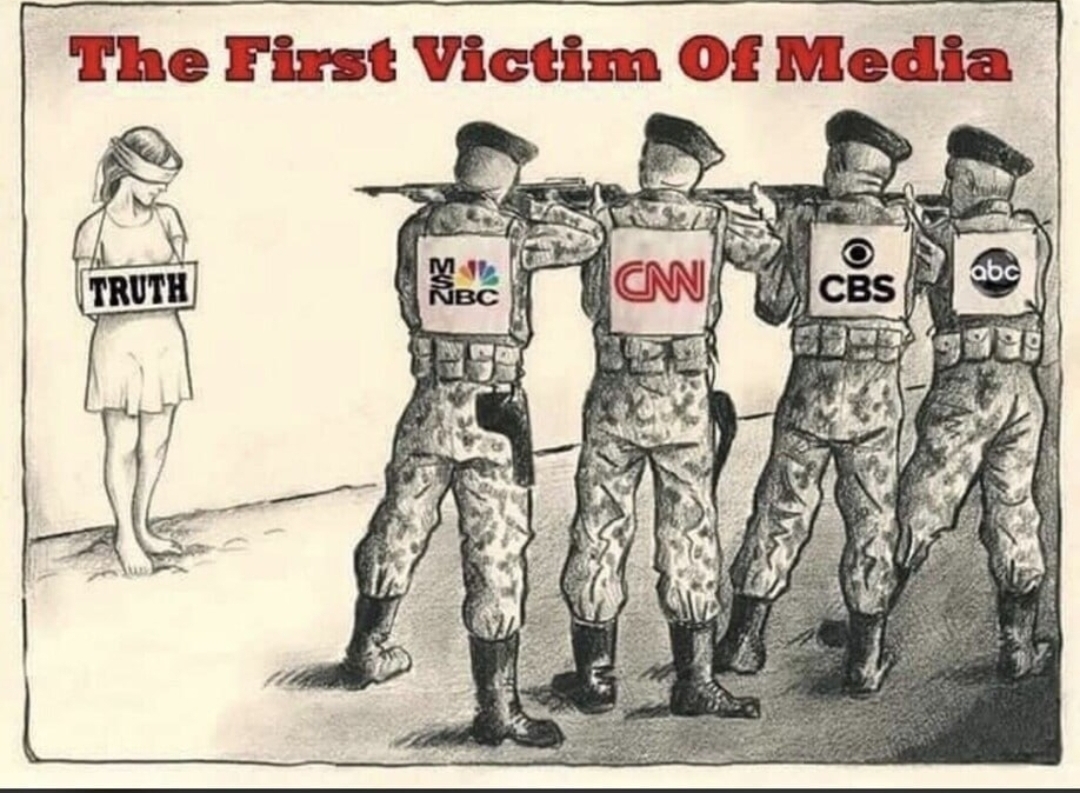
And like malware running in the background, this conditioning persists today. The fruit of that poisoned tree now colors every issue: surveillance, foreign wars, censorship, and even “fact-checking” — all framed as sensible, all presented as protection, all rooted in the original sin of trusting a poisoned system. This is the essence of Hijacked Minds: an entire population living under borrowed thought-scripts, with their mental operating systems compromised by propaganda and noise.
At the conscious level, citizens are given narratives dressed up as “reasonable” or “sensible.” Whether it’s the justification for endless surveillance programs, new wars framed as humanitarian interventions, or censorship presented as “safety,” the conscious mind receives a polished sales pitch. The critical faculties are dulled not because people lack intelligence, but because the framing is continuous and reinforced by repetition across all major media outlets. What appears to be logical discourse is, in fact, a carefully manufactured narrative designed to appear as the only rational choice.
At the subconscious level, the repetition of key phrases, images, and framing works like malware loops. Phrases such as “for your safety,” “national security,” or “the science is settled” create automatic triggers in the subconscious that bypass critical thinking. When confronted with dissenting voices, the subconscious reacts with unease or hostility — not because of genuine reasoning, but because the “code” implanted by propaganda has conditioned people to associate nonconformity with danger.
At the unconscious level, the deepest programming takes root. Over time, citizens no longer even notice the cage; it becomes invisible, like background radiation. Children grow up inheriting these implanted assumptions as “normal,” never questioning why surveillance is constant, why wars never end, or why censorship masquerades as fact-checking. This is where the poisoned system metastasizes into cultural memory, shaping generations who accept bondage as the natural order. The unconscious does not argue or resist — it simply accepts, and in doing so, it passes the poisoned fruit forward.
The tragic brilliance of Hijacked Minds is that the system no longer needs overt control once the unconscious has been colonized. People police themselves, ridicule dissenters, and defend the very structures that diminish them. Just as malware hides in plain sight, this conditioning is rarely questioned, and when it is, the infected culture itself rises up to silence the anomaly.
Why This Matters Now
“The freedoms you surrender today are the freedoms your grandchildren will never know existed.”
Critical thinkers who challenged masks and vaccines weren’t contrarians; they were guardians of liberty. They saw the pattern, the dialectic, the Overton Window shifting again. They understood that the battle is never just about the present — it is about the erosion of memory itself. Those who questioned the official narratives of our time form a lineage of guardians across decades. From assassinations to fabricated crises, from financial collapses to endless wars, the pattern is always the same: lies are injected into the body politic, accepted as truth, and then cemented into cultural memory. To resist is not contrarianism — it is the defense of truth against erasure.
The Guardians of Memory: Key Moments Where Truth-Seekers Pushed Back
Foundational Deceptions & Power Seizures
- The Federal Reserve (1913–1914): Critics exposed it as a private cartel designed to enslave nations in debt under the guise of “stability.”
- World War I (1914–1918): Truth-seekers revealed banker and industrialist profits, along with fabricated incidents like the Lusitania.
- Russian Revolution / Bolshevik Takeover (1917): While presented as a workers’ uprising, researchers later exposed foreign financing, banker involvement, and elite manipulation to collapse the old order and establish communism as a controlled alternative system.
- Zionist Takeover of Israel (1948): Framed as biblical prophecy fulfilled, but truth-seekers pointed to Balfour, Rothschild support, displacement of Palestinians, and the banking-military nexus behind state creation.
- World War II (1939–1945): Exposed Wall Street and London’s ties to Nazi Germany before and during the war.
- Pearl Harbor (1941): Marketed as a “surprise attack,” but records suggest U.S. leadership had foreknowledge and allowed it to justify entry into World War II.
- Chinese Communist Takeover (1949): The Communist victory over the Chinese Nationalist Party (KMT) was celebrated as “liberation,” but many have since pointed to how Western elites and Soviet backing helped establish one of history’s most authoritarian regimes.
20th Century Struggles
- JFK Assassination (1963): “Lone gunman” narrative rejected.
- Vietnam / Gulf of Tonkin (1960s–70s): False flag exposed.
- RFK Assassination (1968): Inconsistencies challenged.
- Kosovo (1999): NATO humanitarian cover story questioned.
- Y2K Panic (1999–2000): Fear cycle manipulation.
21st Century Battlegrounds
- 9/11 (2001): Official story challenged; deeper evidence suppressed.
- 2007–2008 Financial Crisis: Whistleblowers exposed predatory lending and bailout fraud.
- Middle Eastern Wars (Iraq, Afghanistan, Libya, Syria): WMD lies, regime-change propaganda revealed.
- Israel & Palestine Conflicts: Propaganda and atrocities covered up.
- Ukraine (2014 & 2022): NATO vs Russia manipulation.
- Election Integrity (2000, 2020, beyond): Voting system manipulation questioned.
- COVID-19 (2020–2022): Masks, lockdowns, vaccines exposed as Hegelian dialectic control measures.
The Thread That Binds Them
In every case, dissenters were mocked, silenced, or labeled heretics — yet their vigilance delayed or exposed the system’s attempts to normalize lies. This isn’t about nostalgia for past battles. It’s about recognizing that the erosion of memory is itself the battlefield. If truth-seekers fail to preserve context, every generation starts from zero, blind to the recycled playbook of propaganda and control.
Like Knight Ridder, they became the minority voices — mocked, ridiculed, but necessary. Because once enough people “cut off the ends of the roast” without questioning why, freedom itself becomes ritualized obedience.
Conclusion: Awakening and Awareness
The path forward begins with awareness. The roast beef story teaches us to question rituals. The Iraq War teaches us to distrust monopolized power. The Overton Window teaches us to watch the creep. The Hegelian dialectic teaches us to resist manufactured “solutions.”
Awareness is the first cut against propaganda. If we don’t question the poisoned fruit, our children will inherit not just lies, but blindness.
It’s not rebellion we need — rebellion still plays inside the system’s rules. It’s awakening. The refusal to participate in games we never agreed to. The willingness to say: No more cutting the ends off the roast. Let’s ask why.
Only then can we rebuild trust, truth, and freedom.
